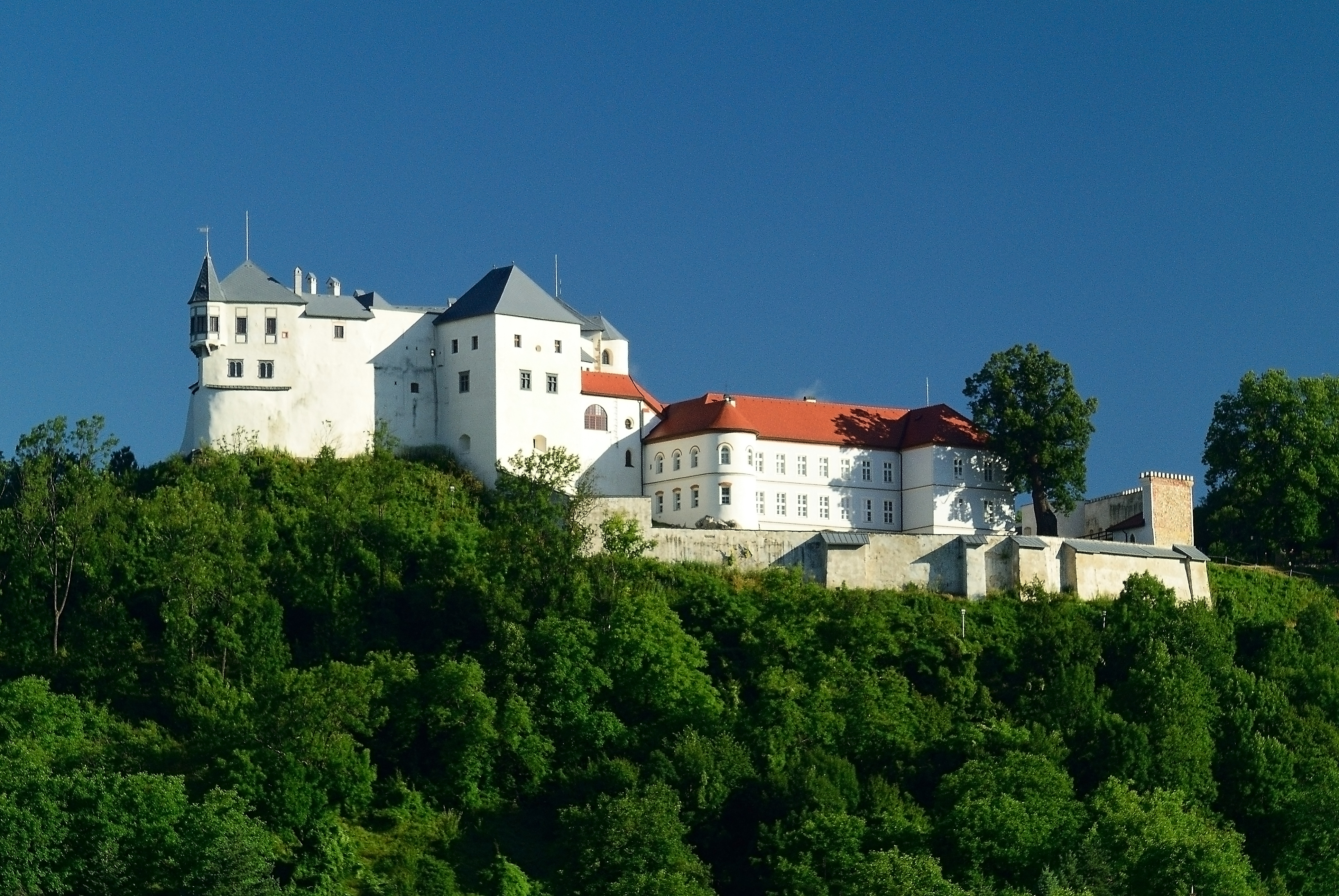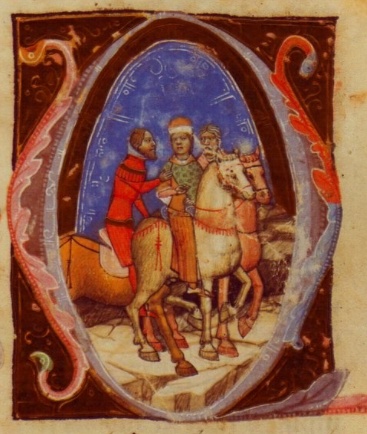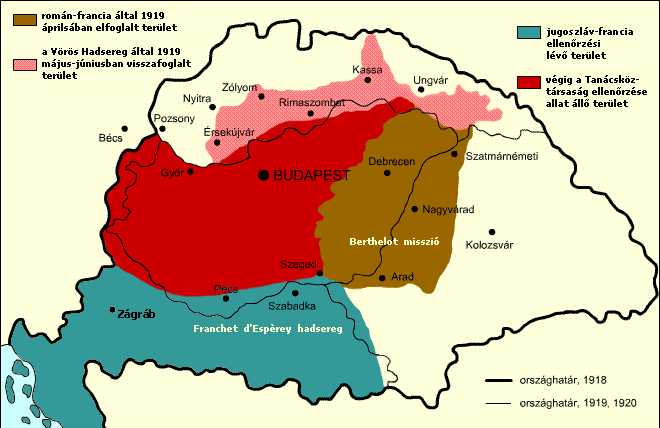|
ДЅupДЌa Castle
The ДЅupДЌa castle towers above the village SlovenskГЎ ДЅupДЌa. It's the highest located castle building in the Hron area (''Pohronie''). The castle is built on the north side of a relatively narrow fold of the Hron which is closed by the slopes of the Slovak Ore Mountains (''SlovenskГ© Rudohorie'') from the south and by the slopes of the Low Tatras from the north. The oldest part of the castle is built on the isolated rock on the last hill of the Low Tatras jag with an altitude of 375m above sea level. History 13th century After the plundering invasion of the Tatars in 1241 only the stone architecture fortresses withstood the invaders. Therefore BГ©la IV of Hungary decided to build defensive structures and castles in the middle of the 13th century. The ДЅupДЌa castle was one of them. According to preserved written reports the castle was built on an important medieval road called Via Magna and served as a checkpoint on the road from BanskГЎ Bystrica to Brezno. In 1255 the castle ... [...More Info...] [...Related Items...] OR: [Wikipedia] [Google] [Baidu] |
SlovenskГЎ ДЅupДЌa
SlovenskГЎ ДЅupДЌa is the largest village in the BanskГЎ Bystrica District of central Slovakia. Geography The altitude of SlovenskГЎ ДЅupДЌa ranges from 370 to 699 metres, with the centre of the village lying at 378 metres. The municipality covers an area of 33.325 km2. It is situated about 10 km east of BanskГЎ Bystrica, in the Hron river valley. SlovenskГЎ ДЅupДЌa is part of two administrative units, the BanskГЎ Bystrica District and the BanskГЎ Bystrica Region. History In historical records the village was first mentioned in 1250. It was founded on an ancient trade route Via Magna connecting Buda to KrakГіw. The settlement was built around two important political and social centers: a castle and a monastery. A favorite residence of the influential noble Magister DonДЌ, SlovenskГЎ ДЅupДЌa was elevated to a town by Charles I of Hungary, Charles I in 1340. SlovenskГЎ ДЅupДЌa lost its town charter in the 19th century. The development of the village in the 20th century wa ... [...More Info...] [...Related Items...] OR: [Wikipedia] [Google] [Baidu] |
Castles In Slovakia
This is a list of castles in Slovakia. This list includes palaces, citadels and manor houses. These Slovak language, Slovak words translate as follows: #''hrad'', ''hrГЎdok'' - castle #''zГЎmok'' - correctly: chГўteau, commonly translated as castle #''pevnosЕҐ'' - fortress, citadel #''kaЕЎtieДѕ'' - mansion or manor house Preserved castles Castle ruins See also * List of castles in Europe * List of castles External links List of Slovak castles at castles.skSlovak castles at slovenskehrady.sk {{Castles by country Castles in Slovakia, * Lists of castles in Europe, Slovakia Lists of buildings and structures in Slovakia, Castles Lists of castles by country, Slovakia Lists of tourist attractions in Slovakia, Castles ... [...More Info...] [...Related Items...] OR: [Wikipedia] [Google] [Baidu] |
Louis I Of Hungary
Louis I, also Louis the Great (; ; ) or Louis the Hungarian (; 5 March 132610 September 1382), was King of Hungary and Croatia from 1342 and King of Poland from 1370. He was the first child of Charles I of Hungary and his wife, Elizabeth of Poland, to survive infancy. A 1338 treaty between his father and Casimir III of Poland, Louis's maternal uncle, confirmed Louis's right to inherit the Kingdom of Poland if his uncle died without a son. In exchange, Louis was obliged to assist his uncle to reoccupy the lands that Poland had lost in previous decades. He bore the title Duke of Transylvania between 1339 and 1342 but did not administer the province. Louis was of age when he succeeded his father in 1342, but his deeply religious mother exerted a powerful influence on him. He inherited a centralized kingdom and a rich treasury from his father. During the first years of his reign, Louis launched a crusade against the Lithuanians and restored royal power in Croatia; his troops ... [...More Info...] [...Related Items...] OR: [Wikipedia] [Google] [Baidu] |
Charles I Of Hungary
Charles I, also known as Charles Robert (; ; ; 128816 July 1342), was King of Hungary and Croatia in the union with Hungary, Croatia from 1308 to his death. He was a member of the Capetian House of Anjou and the only son of Charles Martel of Anjou, Charles Martel, Prince of Salerno. His father was the eldest son of Charles II of Naples and Mary of Hungary, Queen of Naples, Mary of Hungary. Mary laid claim to Hungary after her brother, Ladislaus IV of Hungary, died in 1290, but the Hungarian prelates and lords elected her cousin, Andrew III of Hungary, Andrew III, king. Instead of abandoning her claim to Hungary, she transferred it to her son, Charles Martel, and after his death in 1295, to her grandson, Charles. On the other hand, her husband, Charles II of Naples, made their third son, Robert the Wise, Robert, heir to the Kingdom of Naples, thus disinheriting Charles. Charles came to the Kingdom of Hungary upon the invitation of an influential Croatian lord, Paul I Šubić of ... [...More Info...] [...Related Items...] OR: [Wikipedia] [Google] [Baidu] |
Pope John XXII
Pope John XXII (, , ; 1244 – 4 December 1334), born Jacques Duèze (or d'Euse), was head of the Catholic Church from 7 August 1316 to his death, in December 1334. He was the second and longest-reigning Avignon Papacy, Avignon Pope, elected by the Papal conclave, Conclave of Cardinal (Catholic Church), Cardinals, which was assembled in Lyon. Like his predecessor, Pope Clement V, Clement V, Pope John centralized power and income in the Papacy and lived a princely life in Avignon. John opposed the policies of Louis IV, Holy Roman Emperor, Louis IV the Bavarian as Holy Roman Emperor, which prompted Louis to invade Italy and set up an antipope, antipope Nicholas V, Nicholas V. John also opposed the Franciscans, Franciscan understanding of the poverty of Christ and his apostles, promulgating multiple papal bulls to enforce his views. This led William of Ockham to write against unlimited papal power. Following a three-year process, John Canonization of Thomas Aquinas, canonized Thoma ... [...More Info...] [...Related Items...] OR: [Wikipedia] [Google] [Baidu] |
ZГіlyom County
Zvolen (; ; ) is a city in central Slovakia, situated on the confluence of Hron and Slatina River (Slovakia), Slatina rivers. It is famous for several historical and cultural attractions. It is surrounded by PoДѕana Protected Landscape Area, PoДѕana mountain from the East, by Kremnica Mountains, KremnickГ© vrchy from the West and by Javorie and Е tiavnica Mountains, Е tiavnickГ© vrchy from the South. The population numbers approximately 40,000, which makes it the twelfth-largest city in Slovakia by population, thirteenth by size. It is the center of the PodpoДѕanie historical region and the seat of a county (Zvolen District). It is also an important transportation hub in Slovakia, being one of the four central train stations in Slovakia (others are Bratislava, KoЕЎice and ЕЅilina). Etymology The name is of Slovak language, Slovak (Slavic) origin meaning "the chosen one, splendid, excellent". The Hungarian language, Hungarian ' and the German language, German ' were derived from ... [...More Info...] [...Related Items...] OR: [Wikipedia] [Google] [Baidu] |
Andrew III Of Hungary
Andrew III the Venetian (, , ; – 14 January 1301) was King of Hungary and King of Croatia, Croatia between 1290 and 1301. His father, Stephen the Posthumous, was the posthumous son of Andrew II of Hungary although Stephen's older half brothers considered him a bastard. Andrew grew up in Venice, and first arrived in Hungary upon the invitation of a rebellious baron, Ivan Kőszegi, in 1278. Kőszegi tried to play Andrew off against Ladislaus IV of Hungary, but the conspiracy collapsed and Andrew returned to Venice. Being the last male member of the House of Árpád, Andrew was elected king after the death of King Ladislaus IV in 1290. He was the first Hungarian monarch to issue a coronation diploma confirming the privileges of the noblemen and the clergy. At least three pretenders—Albert I of Germany, Albert of Austria, Mary of Hungary, Queen of Naples, Mary of Hungary, and an adventurer—challenged his claim to the throne. Andrew expelled the adventurer from Hungary and forc ... [...More Info...] [...Related Items...] OR: [Wikipedia] [Google] [Baidu] |
Ottokar II Of Bohemia
Ottokar II (; , in Městec Králové, Bohemia – 26 August 1278, in Dürnkrut, Austria, Dürnkrut, Lower Austria), the Iron and Golden King, was a member of the Přemyslid dynasty who reigned as King of Bohemia from 1253 until his death in 1278. He also held the titles of Margrave of Moravia from 1247, Duke of Austria from 1251, and Duke of Styria from 1260, as well as Duke of Carinthia and Margrave of Carniola, landgrave of Carniola from 1269. With Ottokar's rule, the Přemyslids reached the peak of their power in the Holy Roman Empire. His expectations of the imperial crown, however, were never fulfilled. Ottokar was the second son of King Wenceslaus I of Bohemia (reigned 1230–1253). Through his mother, Kunigunde of Hohenstaufen, Kunigunde, daughter of Philip of Swabia, he was related to the Holy Roman Emperors of the House of Hohenstaufen, Hohenstaufen dynasty, which became extinct in the male line upon the execution of King Conradin, Conradin of Sicily in 1268. Named aft ... [...More Info...] [...Related Items...] OR: [Wikipedia] [Google] [Baidu] |
Battle On The Marchfeld
The Battle on the Marchfeld (''i.e. Morava (river), Morava Field''; ; ; ); at DГјrnkrut, Austria, DГјrnkrut and Jedenspeigen took place on 26 August 1278 and was a decisive event for the history of Central Europe for the following centuries. The opponents were a Kingdom of Bohemia, Bohemian (Czech) army led by the PЕ™emyslid dynasty, PЕ™emyslid king Ottokar II of Bohemia and the Holy Roman Empire, German army under the German king Rudolph I of Germany, Rudolph I of Habsburg in alliance with King Ladislaus IV of Hungary. With 15,300 mounted troops, it was one of the largest cavalry battles in Central Europe during the Middle Ages. The Hungarian cavalry played a significant role in the outcome of the battle. King Ottokar II of Bohemia expanded his territories considerably from 1250 to 1273, but suffered a devastating defeat in November 1276, when the newly elected German king Rudolph I of Germany, Rudolph I of Habsburg imposed the Imperial ban on Ottokar, declaring him an outlaw ... [...More Info...] [...Related Items...] OR: [Wikipedia] [Google] [Baidu] |
Poniky
Poniky () is a village and municipality in BanskГЎ Bystrica District in the BanskГЎ Bystrica Region of central Slovakia. History In historical records the village was first mentioned in 1282. Before the establishment of independent Czechoslovakia in 1918, Poniky was part of ZГіlyom County within the Kingdom of Hungary. From 1939 to 1945, it was part of the Slovak Republic. On 23 March 1945, the Romanian Army dislodged the Wehrmacht from Poniky and it was once again part of Czechoslovakia. Geography The municipality lies at an altitude of 502 metres and covers an area of 59.037 km2. It has a population Population is a set of humans or other organisms in a given region or area. Governments conduct a census to quantify the resident population size within a given jurisdiction. The term is also applied to non-human animals, microorganisms, and pl ... of about 1,564 people. References Villages and municipalities in BanskГЎ Bystrica District {{BanskaBystrica-geo ... [...More Info...] [...Related Items...] OR: [Wikipedia] [Google] [Baidu] |








